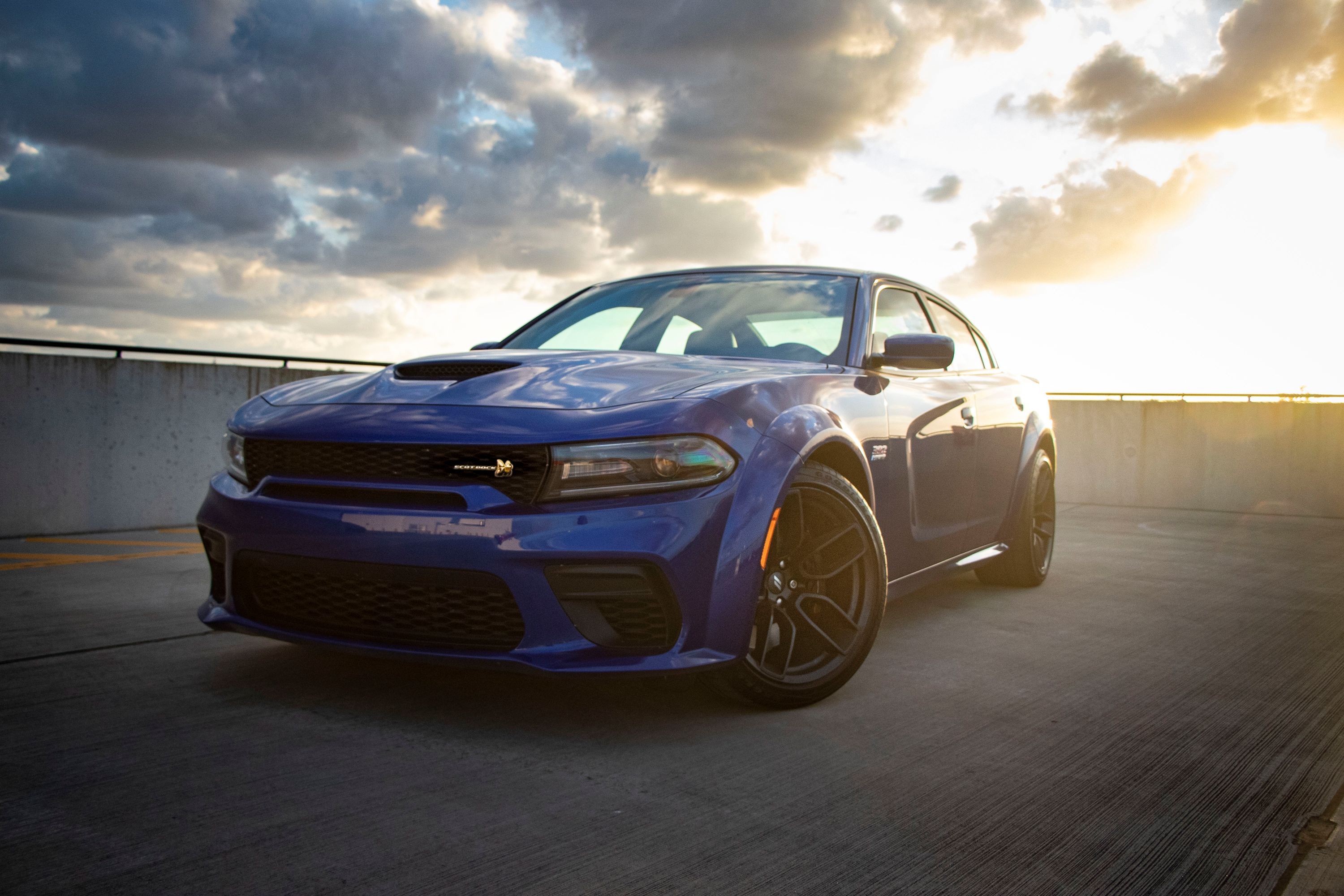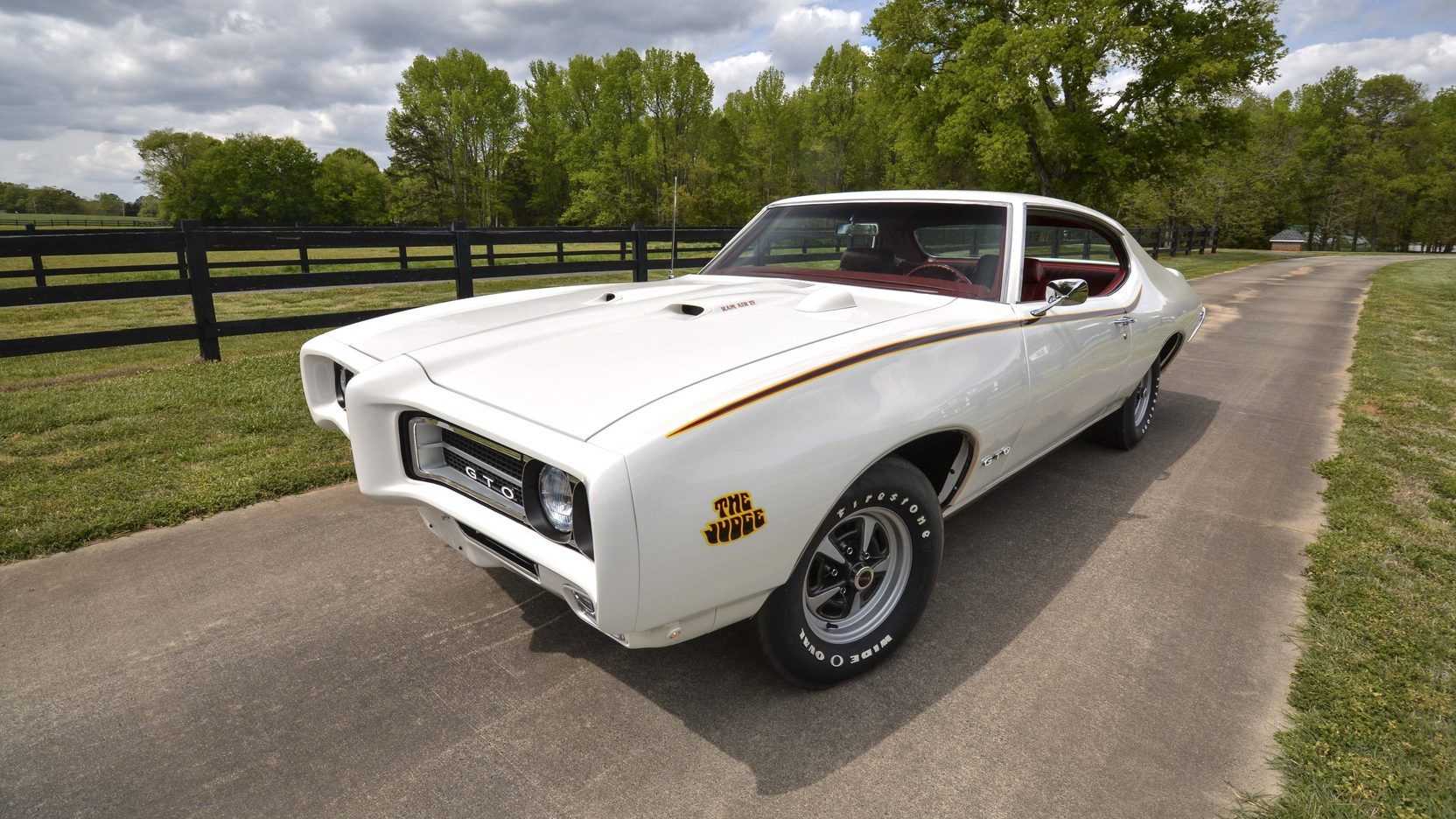
Custom cars can be traced back to the very first production cars and well-heeled Europeans, and then Hollywood film stars. But, it wasn't until post World War II America, and the economic boom that came with it, that customizing cars became a cultural phenomenon. The availability of pre-war cars mixed with the availability of Ford's 1932 flathead V8 brought about a rise in street racing. That led to what police called "speed contests" as kids pitted their "gow jobs" against each other, and sometimes with tragic consequences accompanied by a lot of hysterical headlines and the inevitable rise of public opinion.
Customization isn't only about speed though. Bold paint jobs and artistic flair with an airbrush has also long held a place in car culture. Self-expression is a huge part of car culture and can also be traced back to the first cars and those rich Europeans and Hollywood stars, although the most interesting and long-lasting trends come from cash-flow challenged people having to get creative with what they have.
All car culture, like any culture, is full of anachronisms, and initialisms. The custom car world goes back a long way and it's mainly a rich history of jargon. While explaining what a bobbed and bagged A-Bone with a bellypan and on baloneys may be beyond the purview of this particular article, we'll get into the overview of the most common terms for kinds of custom cars we come across and get into the broad history a little bit.
Hot Rod
Hot rod is an old school term that's been replaced with the term tuner over the past few generations of enthusiast. The origins of the hot rod term are murky as it goes back as early as the 1920s and became predominant in the 1950s. The hot part definitely refers to "hotting up" a car, as in making it faster. The rod part is most likely referring to a roadster, as in a lightweight 2-door car and the original blueprint for hotrods. However, it could also be a reference to an engine's camshaft, or "rod", which was often one of the base upgrades to help make better power.
T-Bucket
The T-Bucket is one of the purest forms of the hot rod. It goes back to the American actor and hot rod builder, Norm Grabowski. Essentially a T-Bucket is a Ford Model T roadster that has been stripped down to leave the chassis (whether it's customized or gets a specifically fabricated chassis), the large bucket seat, and bare engine. Typically, you'll see wide tires on the back and bicycle-thin tires on the front. T-Buckets are light and quick off the line, and soon became a favorite of 1/4 mile racers and the archetype of the drag racing car.
Highboy
A highboy is essentially a roadster or coupe that's had the fenders removed but keeps the factory body and its mounting position. Stripping everything down and cutting up and channeling the chassis is more work than younger hot rodders wanted or could take on so, as the name suggests, highboys wouldn't be as low as full-on racers but would be lighter and faster than stock. The highboy's roots can be traced directly back to post World War II California.
Gasser
A gasser is a type of drag racing car that ran on pump gas rather than race fuel. Drag racing on the street became rampant and dangerous, so there was a big move to get kids from racing on the street to designated places; mainly abandoned WWII airstrips. Gassers were stripped out to be as light as possible and usually had the front raised to help get the weight balance towards the rear wheels quicker under acceleration.
Funny Car
The funny car is the logical progression of the T-Bucket and the gasser car. Funny cars have a thin single or two-piece body shell that can be quickly removed to access the big engine and narrow and longer custom chassis. That long thin look mixed with the huge rear tires generated the term funny car as they had the same basic shape of real cars but looked funny. Nowadays, purpose-built drag cars have taken the funny car to the extreme by having just the vaguest of nods to looking anything like a real car.
Rat Rod
At the height of hot rodding, not everyone had access to workshops or a lot of money to spend, so they would use what was available and concentrate on doing what they could with what they could afford. A lot of rat rods were also ongoing projects and made up of mismatched parts. It led to less of a focus on aesthetic and more of a focus on fabrication skills and mechanical inventiveness. Over time, rat rodding has become its own niche and it's still a strong one today with people deliberately leaving them unfinished, using aging paint and patina to get the rat rod aesthetic.
Pony Car
Soldiers returning from WWII had a huge effect on American culture, and the most obvious examples are pizza and small lightweight sports cars. The pizza grew in popularity in New York after soldiers came back from Italy and spread from there, while petrolhead soldiers from all over the US started shipping in European sports cars to the point European manufacturers started making US friendly versions of their cars.
Ford was first to capitalize on the movement with the Mustang. Dennis Shattuck coined the phrase pony car in Car Life magazine and it came to mean a small, affordable, performance car with a long hood and short rear deck. Still, today, nobody is getting bored of custom classic pony cars.
Muscle Car
Following the pony car was the horsepower race. Mid to full-size coupes needed more torque to move them and the room under the hood meant more space for bigger engines. The muscle car had been around for some time but, despite concerns over public safety, the muscle car era of the 1960s exploded as engines got more and more powerful. Unfortunately, the balloon burst with the double pinpricks of the gas crisis and environmental concerns of the early 1970s. Icons were born though, and customizing classic muscle with modern horsepower is not going out of fashion anytime soon.
Lowrider
Custom cars have never been just about going fast, and on the sliding scale of fast and looking good, the lowrider slides all the way to the right. The lowrider was born in Los Angeles, California, during the 1950s. Initially, it was Mexican-American youths lowering their cars with whatever methods were at hand with the aim of driving around their neighborhoods "low and slow". Then came bold paint jobs and the lowrider transformed into a far-reaching cultural and political expression.
Inevitably, California enacted a state law aimed at lowriders, making it illegal to operate any car modified so that any part was lower than the bottoms of its wheel rims. That was in 1958, but in 1959 a customizer named Ron Aguirre figured out a way to bypass the law and use hydraulic pumps and valves to raise or lower the car with a switch. The lowrider scene is still big and influential and has spread across the world as well as the United States.
Hi-Riser
While lowriders are all about culture and statement, a hi-riser is a tongue-in-cheek way of showing off, and most commonly known as a donk. It's also the most hated subset of custom car culture. Basically, a donk is a car on absurdly big wheels and the flashy over the top paint job is optional. If you want to trace the origin of the donk, it goes back to the 1990s when big 20" shiny wheels were a way of bragging about your money, then 22", 24", 28" rims became available and things started getting silly.
Although you'll see pictures of 40" wheels on donks, and then truly comical sizes, 30" wheels are where things leveled out. The craze started off in South Coast hip-hop culture and grew into the East Coast scene. The term donk comes from the popularity of large late 20th century sedans being customized, and in particularly the Chevy Impala. Chevy's Impala symbol was often referred to as a donkey by owners, or donk for short.
Import, JDM, and Tuners
While hot rodding has never gone away, imports brought the raw ingredients for hot rodding to create a whole new genre and introduce the word tuner to the world stage. Hot rodding was born of the availability of cheap cars and street racing, and in the 1990s an early 2000s Japanese and European cars were freely available but often built elsewhere and imported. The advent of the Fast and Furious movie took an underground niche and created a boom of tuners taking mainly Japanese cars and applying the hot rodding ethos to them.
The term JDM (Japanese Domestic Market) became a common term in the early 2000s and had cache, but nowadays European and Japanese companies are worldwide concerns and cars are designed and built all over the place. Honda, for example, has four cars featuring in the American Made Index right now and eight manufacturing plants across the US. There's also little need for tuners to have their parts overnighted from Japan anymore as the aftermarket is immense now and has pretty much everything covered. However, there is still some forbidden fruit and reasons to import.
Stance
Stance culture reached its peak a few years ago, and at times some of the cars have been as comical as others are beautiful. Initially, stance was about imitating the low and aggressive style of GT and race cars before becoming about exaggeration. Like lowriders though, stance is all about looks and little about performance despite the inspiration being sports cars. When done well, the cars can look amazing. When done badly, hilarity ensues and memes are created.

